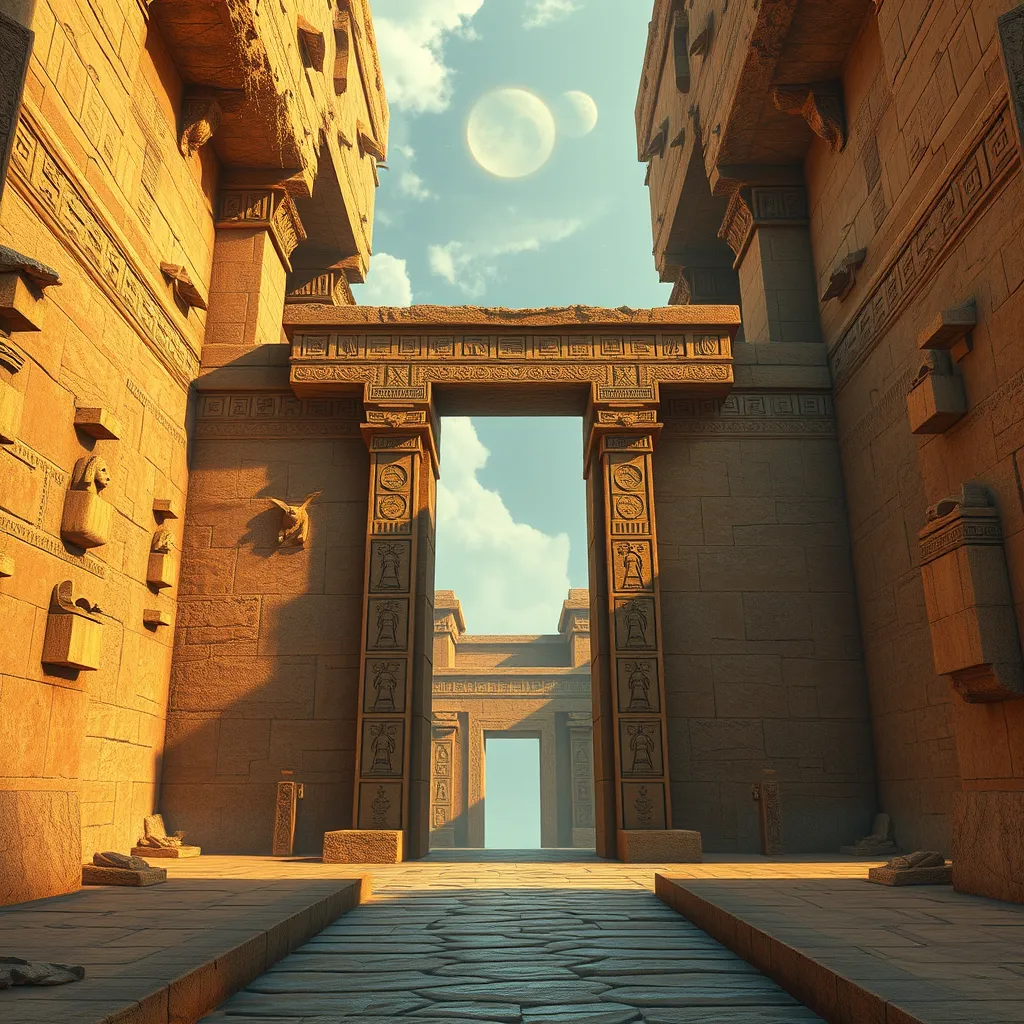The Duat: A Symbol of Hope and Renewal
I. Introduction
The Duat, a fundamental concept in ancient Egyptian mythology, represents the realm of the afterlife where souls embark on a transformative journey. It is often depicted as a mysterious and complex landscape, rich with symbolism and spiritual significance.
The Duat is not merely a place of judgment; it is a realm that embodies the themes of hope and renewal. For the ancient Egyptians, the journey through the Duat was seen as an opportunity for rebirth, reflecting their profound belief in life after death and the cyclical nature of existence.
II. Historical Context of the Duat
The beliefs surrounding the Duat evolved significantly over the millennia. Initially, the afterlife was viewed simply as a continuation of life on earth, but over time, these beliefs became more elaborate, giving rise to intricate depictions of the Duat.
Key texts, such as the “Book of the Dead,” serve as primary sources that illustrate the significance of the Duat in ancient Egyptian culture. These texts detail the rituals, spells, and guidance necessary for navigating the afterlife.
In Egyptian cosmology, the Duat played a critical role. It was believed to be located beneath the earth and was intricately linked to the sun god Ra’s journey through the underworld each night, symbolizing the cycle of death and rebirth.
III. The Journey Through the Duat
The journey through the Duat is a central theme in Egyptian mythology, representing a soul’s passage after death. Souls would face various trials and challenges, including confrontations with monstrous deities and navigating treacherous landscapes.
- Trials: Souls had to answer questions posed by the divine beings they encountered, demonstrating their worthiness.
- Challenges: Obstacles such as rivers of fire and dangerous creatures tested a soul’s resolve and purity.
- Symbolism: This journey is viewed as a process of purification, where the soul transforms and prepares for eternal life.
IV. Deities of the Duat
Numerous deities inhabit the Duat, each playing a significant role in guiding and protecting souls. Key figures include:
- Osiris: The god of the afterlife and resurrection, often depicted as a judge of the dead.
- Anubis: The god of mummification and the protector of graves, who guides souls through the Duat.
- Thoth: The god of wisdom and writing, who records the deeds of the deceased.
These deities embody the hope and renewal associated with the Duat, providing comfort and assurance to souls embarking on their journey.
V. The Duat in Egyptian Art and Literature
The Duat is vividly represented in Egyptian art, particularly in tomb paintings and inscriptions. These artworks often depict scenes from the afterlife, illustrating the trials souls must face and the deities they will encounter.
Literary works, such as the “Book of the Dead,” describe the Duat in great detail, offering insights into the ancient Egyptians’ views on death and the afterlife. These texts not only reflect their beliefs but also their hopes for eternal life.
Through art and literature, the themes of hope and renewal are powerfully conveyed, showcasing the ancient Egyptians’ desire for a successful journey through the Duat and achieving a place in the afterlife.
VI. The Duat’s Influence on Later Cultures
The concept of the Duat has had a lasting impact on various belief systems and mythologies across cultures. Many societies have developed their own interpretations of the afterlife, often drawing inspiration from ancient Egyptian beliefs.
Comparisons can be made between the Duat and other concepts of the afterlife, such as:
- Greek Hades: A realm where souls undergo judgment and face trials.
- Christian Heaven and Hell: Concepts of eternal reward or punishment based on earthly deeds.
- Hindu and Buddhist Samsara: The cycle of birth, death, and rebirth influenced by karma.
The enduring legacy of the Duat’s themes can be seen in modern spirituality, where the ideas of transformation and renewal resonate with contemporary seekers of meaning.
VII. Contemporary Interpretations of the Duat
In today’s discussions about life and death, the Duat remains relevant. It serves as a metaphor for personal growth and resilience, illustrating the transformative journeys individuals undergo in their lives.
Modern literature, art, and popular culture often draw upon the themes of the Duat, exploring concepts of renewal and the afterlife in varied contexts. This reflects a continued fascination with the mysteries of existence and the hope for something beyond the physical world.
VIII. Conclusion
In summary, the Duat stands as a powerful symbol of hope and renewal in ancient Egyptian mythology. It reflects humanity’s enduring quest for meaning and understanding in the face of mortality.
As we reflect on these ancient beliefs, we see how they continue to inspire contemporary perspectives on life, death, and the possibility of rebirth. The Duat invites us to consider our journeys and the transformations we undergo, reminding us of the hope that lies in renewal and the quest for eternal significance.




